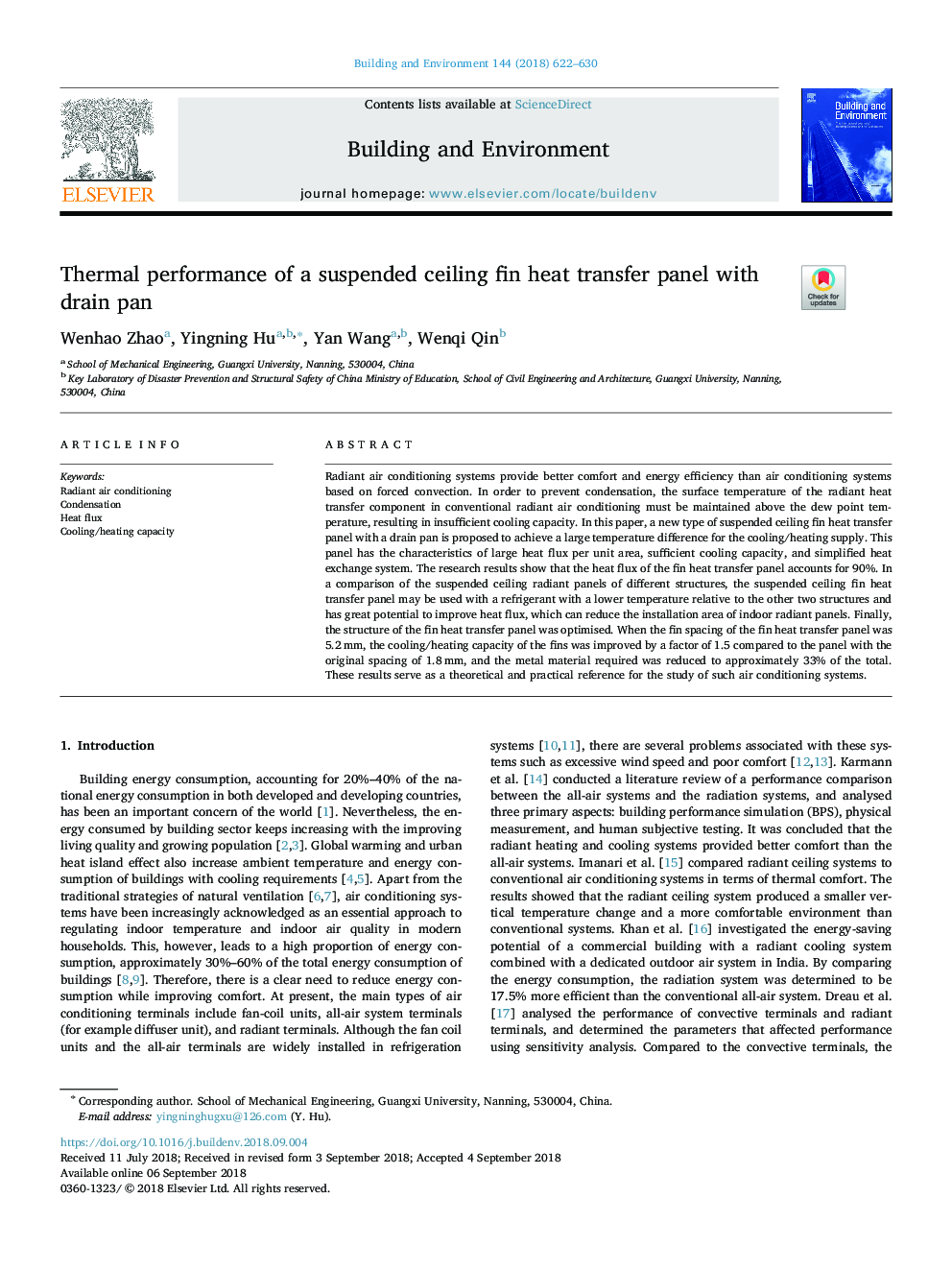| Article ID | Journal | Published Year | Pages | File Type |
|---|---|---|---|---|
| 11000981 | Building and Environment | 2018 | 9 Pages |
Abstract
Radiant air conditioning systems provide better comfort and energy efficiency than air conditioning systems based on forced convection. In order to prevent condensation, the surface temperature of the radiant heat transfer component in conventional radiant air conditioning must be maintained above the dew point temperature, resulting in insufficient cooling capacity. In this paper, a new type of suspended ceiling fin heat transfer panel with a drain pan is proposed to achieve a large temperature difference for the cooling/heating supply. This panel has the characteristics of large heat flux per unit area, sufficient cooling capacity, and simplified heat exchange system. The research results show that the heat flux of the fin heat transfer panel accounts for 90%. In a comparison of the suspended ceiling radiant panels of different structures, the suspended ceiling fin heat transfer panel may be used with a refrigerant with a lower temperature relative to the other two structures and has great potential to improve heat flux, which can reduce the installation area of indoor radiant panels. Finally, the structure of the fin heat transfer panel was optimised. When the fin spacing of the fin heat transfer panel was 5.2â¯mm, the cooling/heating capacity of the fins was improved by a factor of 1.5 compared to the panel with the original spacing of 1.8â¯mm, and the metal material required was reduced to approximately 33% of the total. These results serve as a theoretical and practical reference for the study of such air conditioning systems.
Related Topics
Physical Sciences and Engineering
Energy
Renewable Energy, Sustainability and the Environment
Authors
Wenhao Zhao, Yingning Hu, Yan Wang, Wenqi Qin,
